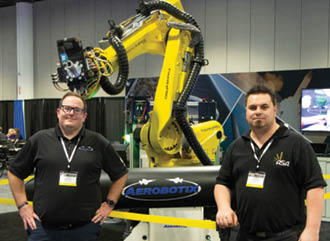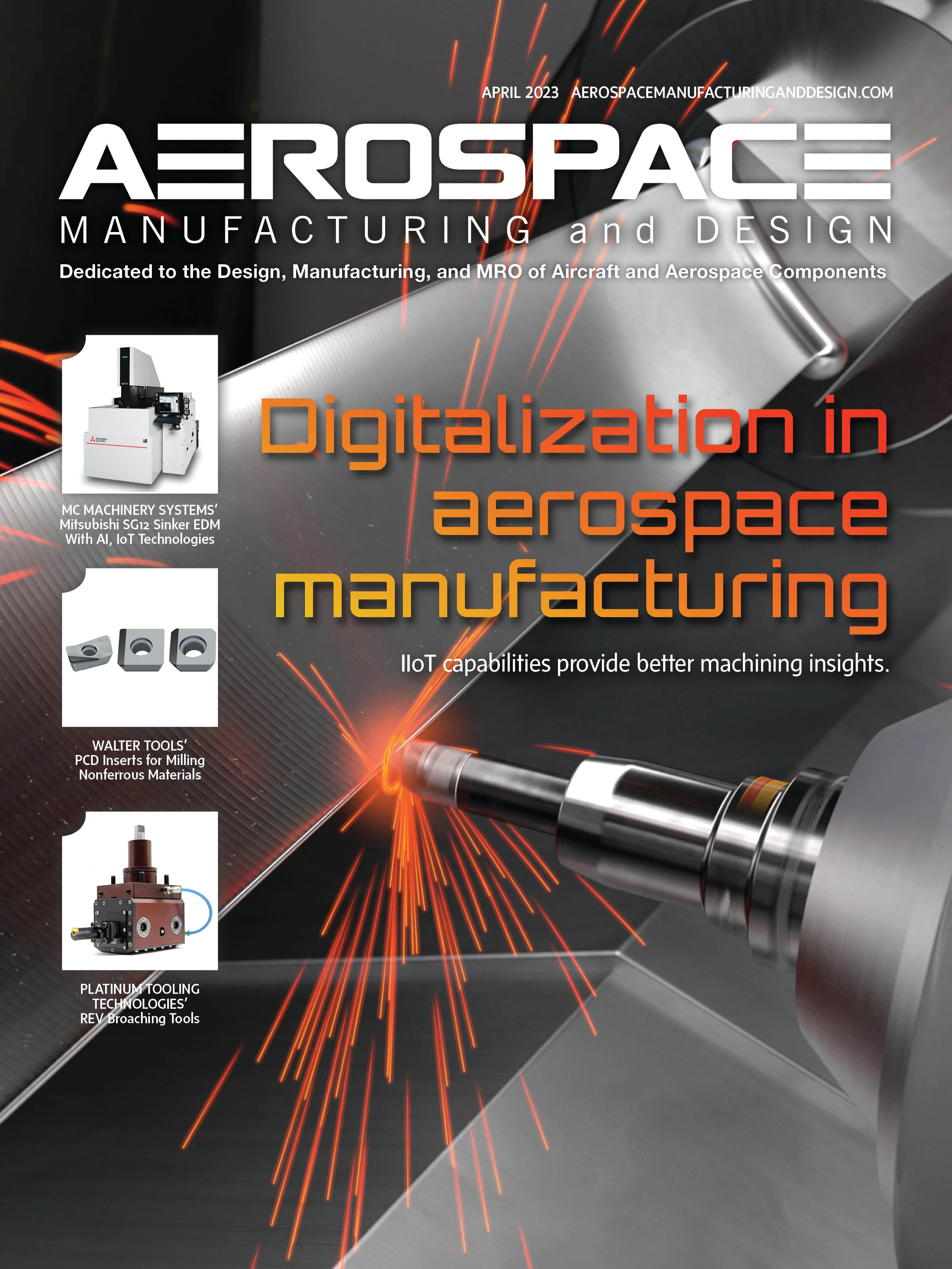
By chinnarach | © Stock Adobe

For manufacturers, eliminating repetitive, tedious tasks seems like a goldmine. In many cases, it’s as simple as installing a robot. Robotic process automation (RPA) – a subset of automation – implements software to emulate human activity. A simple app can be created to execute processes employees typically perform manually or repetitively.
Immeasurable opportunities exist for manufacturers to implement RPA, particularly in back-office functions that’ll set up teams to work smarter and faster. Yet, in Sikich’s latest M&D Pulse survey, 50% of manufacturers don’t plan to invest in RPA. Why not?
Misconceptions of RPA
When manufacturers think of automation, they typically envision big robots working on the factory floor. Sikich’s survey found 40% of manufacturers consider the factory floor the highest priority for automation. While factory floor automation provides major benefits for manufacturers, it can come with a hefty price tag. Companies must purchase equipment, train it to perform tasks, then monitor and maintain the robotic equipment. They must ensure it’s properly embedded within existing processes, or processes must be carefully re-evaluated to successfully adopt the new technology.
Since RPA is software-based automation, it can be achieved with a smaller investment and less disruption. Many apps are available for free. And Microsoft’s Power Platform including Power Automate – an RPA tool that allows users to build automated workflows – is available directly within Windows 11. Years of innovation have made RPA an easy and affordable way to automate back-office processes. Gone are the days of needing engineers, developers, and coders to implement these tools. Today, building automation only requires basic computer skills. The more complex the automation, the more challenging it becomes – but most manufacturers can make major strides with simple RPA bots.
While RPA can be used on the factory floor, software-based automation holds true disruptive power in back-office areas of business, such as finance, human resources, and marketing. These business functions require many manual processes and automation can trim tedious tasks to only the essentials. RPA provides an opportunity to uncover quick wins without making major investments – especially relevant in unstable economic environments.
Where to start?
Once manufacturers discover RPA is easy, inexpensive, and highly rewarding, the next step is to identify where RPA can make the biggest impact in their own companies. Manufacturing leaders should pursue these four strategies to uncover the most fruitful opportunities:
1. Learn what other companies are doing.
Whether it’s a top competitor or a company from another industry, understanding how other organizations automate processes can inspire you to find opportunities within your own company. Numerous case studies describe how major companies have implemented RPA. By understanding the basics of how they use automation, you can recreate these tools – often faster and less expensively than the company that inspired you. As a result of the supply chain challenges over the past few years, many companies have automated portions of their supply chain. For example, some manufacturers use RPA to vet and onboard new vendors. Taken a step further, a bot can be connected to an artificial intelligence (AI) tool to review metrics that judge a vendor’s reliability, cost, and more. The tool can rank vendors and, after selecting one, handle some of the onboarding process.
2. Identify the company’s top challenges.
What are the most monotonous, time-consuming tasks within your organization? Is there a repetitive portion of payroll that your finance team dreads each month? Are you struggling to respond to website inquiries quickly? Find the processes at your organization that cause the biggest headaches and use an app to solve them.
For example, at the start of the pandemic, logging, tracking, and managing COVID-19 reporting was a major headache for many manufacturers. Low-cost apps can automate the reporting process, removing that task from an employee who can refocus on more creative, productive work.
3. Chart the customer experience.
Look at all the ways a customer interacts with your company – from initial outreach, to payment and receipt of product, to ongoing relationship management. Where can you improve the experience? Can you provide more reliable delivery information? Can you make the payment process smoother?
Focusing on the customer experience allows you to reap financial benefits quickly from an investment in RPA. Marketing automation is a simple way to begin. A bot can redirect website form fills to the relevant employee. Or it can send automated emails when a customer hits various points in the purchase process.
4. Consider where your team is stretched thin.
RPA can reduce monotonous processes to redirect employees to more engaging work. If you struggle to staff a particular department, perhaps one with a fluctuating workload, RPA might present the opportunity to take some responsibilities off employees’ to-do lists and let them prioritize more high-value tasks.
For example, manufacturers can use RPA to have visitors sign-in to a facility, share relevant health and safety information, identify who they are visiting, and even send alerts to the relevant employees. By replacing this facility reception task with technology, reception staff can focus on higher-priority work.
Armed with information on how – and why – to implement RPA, there’s no better time to invest in automation. RPA allows manufacturers to take major strides with innovative technology at an attainable cost that allows them to do more, with less. From cost savings to improved customer service to a more exciting and rewarding workplace for employees – the companies embracing technological innovation will set themselves up for long-term success.
Sikich LLP
D&A NEWS & PRODUCTS

Increased edge compute performance for in-orbit AI
CogniSAT-XE2 is the next-generation hardware platform for delivering state of the art artificial intelligence (AI) in space.
Building on flight-proven CogniSAT technology, CogniSAT-XE2 comes in a mechanical and power envelope compatible with small satellites down to CubeSats and delivers increased compute performance per Watt.
Satellites designed using CogniSAT-XE2 accelerate system return on investment (ROI) by maximizing in-orbit data analysis capabilities for actionable insights in real-time and optimized downlink data load. CogniSAT-XE2 provides the capabilities to enable a wide variety of AI-enabled applications such as real-time navigation and collision avoidance assistance, image analysis and insight generation, area of interest identification, and smart data management.
Operators can integrate CogniSAT-XE2 within their satellite systems using the CogniSAT-HCS host control software that can also orchestrate use of the CogniSAT-XE2 platform for different tasks during a single orbit. The CogniSAT-TK provides the AI software developer with a range of image pre-processing and post-processing algorithms to speed development of applications optimized for the CogniSAT-XE2 platform.
Ubotica Technologies
New International Digital Twin Association member

CONTACT Software became the newest member of the International Digital Twin Association (IDTA) and is involved in further development of the Asset Administration Shell (AAS). The open-source project aims to establish a global standard for Industry 4.0, which networks manufacturing companies and their systems end-to-end.
The IDTA was founded as a spin-off of Plattform Industrie 4.0 by VDMA, ZVEI, and Bitkom associations with originally 20 companies from the mechanical and electrical engineering sectors. The international alliance now has 86 members after the addition of CONTACT.
The management shell creates the frame for end-to-end information flows between companies, plants, and information technology (IT) platforms: It networks and describes the product twin so manufacturers, suppliers, and customers can collect, exchange, and use high-quality data.
The AAS will provide complete life cycle files of machines, their components and assemblies, software, supplier material, preliminary products and orders, and legally relevant documents such as certifications and contracts.
CONTACT Software
International Digital Twin Association (IDTA)
ASA visits with Aerobotix

Robotics integrator Aerobotix welcomed a delegation from new partner Automated Solutions Australia (ASA) to its U.S. headquarters.
The visit comes as these two robotics integrators continue to move forward with their partnership, first announced in June 2022, for the development, testing, and manufacturing of automated performance coating systems for hypersonic solutions in the defense sector.
In addition to spending time in Alabama, ASA general manager Nathan Jones traveled with Aerobotix to the Defense Manufacturing Conference in Tampa, Florida, in December.
The Aerobotix-ASA partnership follows the 2021 signing of the AUKUS security pact between the U.S., U.K., and Australian governments, which includes provisions for the allies to work together on hypersonic and counter-hypersonic capabilities.
Aerobotix
Automated Solutions Australia

Explore the April 2023 Issue
Check out more from this issue and find your next story to read.
Latest from Aerospace Manufacturing and Design
- AAMI project call submission deadline extended to May 12
- Jergens launches cast iron tooling column additions
- Airbus to acquire assets relating to its aircraft production from Spirit AeroSystems
- FANUC America's Cobot and Go web tool
- Chicago Innovation Days 2025: Shaping the future of manufacturing
- High-density DC/DC converters for mission-critical applications
- #59 - Manufacturing Matters: Additive manufacturing trends, innovations
- ACE at 150: A legacy of innovation and industry leadership







